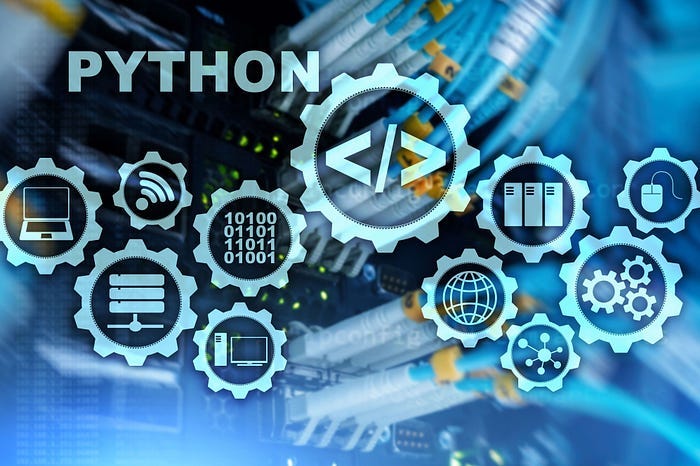Python Crash Course for Beginners | Python Namespace and Scope

A critical aspect of programming in Python is understanding namespaces and scopes. These concepts enable you to manage and organize your code, preventing naming conflicts and providing structure to your programs. This article will provide a comprehensive overview of Python namespaces and scopes, discussing their importance, how they work, and presenting coding examples with explanations.
Understanding Namespaces
In Python, a namespace is a mapping from names (identifiers) to objects, such as variables, functions, or classes. It helps to prevent naming conflicts by ensuring that each identifier is unique within its specific namespace.
Types of Namespaces
There are three types of namespaces in Python:
Built-in Namespace
This namespace contains built-in functions, exceptions, and other objects that are available by default in Python. It is automatically loaded when the Python interpreter starts. Examples include ‘print()’, ‘len()’, and ‘int()’.
# Using built-in functions
print("Hello, World!")
length = len("Hello, World!")Global Namespace
The global namespace includes identifiers defined at the top level of a script or module. These identifiers are accessible throughout the module but not across other modules unless explicitly imported.
# Defining a variable in the global namespace
global_var = "Global variable"
# Defining a function in the global namespace
def global_function():
print("This is a global function.")Local Namespace
Local namespaces are specific to a function or method, existing only within their respective code blocks. Variables, functions, or classes defined within a local namespace are not accessible outside the function or method.
def local_example():
local_var = "Local variable"
print(local_var)
local_example() # This will print "Local variable"
print(local_var) # This will raise a NameError as local_var is not accessible outside the functionPython Scope
Scope refers to the area of the code where a particular namespace is accessible. There are four types of scope in Python:
Local Scope
The local scope is the innermost scope, which is specific to a function or method. Identifiers defined in this scope are accessible only within the function or method.
def outer_function():
x = 5 # x is in the local scope of outer_function
def inner_function():
print(x) # inner_function can access x because it is in the enclosing scope
inner_function()
outer_function() # This will print "5"Enclosing Scope
The enclosing scope is relevant when dealing with nested functions. It refers to the scope of an outer function or method that contains a nested function.
def outer_function():
outer_var = "Outer variable"
def inner_function():
inner_var = "Inner variable"
print(outer_var) # Accessing outer_var from the enclosing scope
inner_function()
outer_function() # This will print "Outer variable"Global Scope
The global scope encompasses the entire module or script. Identifiers in the global scope can be accessed from anywhere within the module but not across other modules unless explicitly imported.
global_var = "I am global!"
def access_global_var():
print(global_var) # Accessing global_var from within a function
access_global_var() # This will print "I am global!"Built-in Scope
The built-in scope is the outermost scope in Python, containing built-in functions, exceptions, and other objects available by default. Identifiers in the built-in scope can be accessed from any part of the code without the need for imports.
def scope_example():
x = len("Hello, World!")
print(x)
scope_example() # This will print "13" as len() is a built-in functionThe ‘global’ Keyword
The ‘global’ keyword is used to indicate that a variable is a global variable, allowing you to access and modify its value from within a function or method.
global_var = 10
def modify_global_var():
global global_var
global_var = 20
print("Inside function:", global_var)
modify_global_var() # This will print "Inside function: 20"
print("Outside function:", global_var) # This will print "Outside function: 20"The ‘nonlocal’ Keyword
The ‘nonlocal’ keyword is used to indicate that a variable belongs to the nearest enclosing scope, allowing you to access and modify its value from within a nested function.
def outer_function():
outer_var = "I am outer!"
def inner_function():
nonlocal outer_var
outer_var = "I am outer, modified!"
print("Inside inner_function:", outer_var)
inner_function()
print("Inside outer_function:", outer_var)
outer_function()
# This will print:
# Inside inner_function: I am outer, modified!
# Inside outer_function: I am outer, modified!Best Practices
Understanding namespaces and scopes is essential for writing efficient and well-structured code in Python. Some best practices to consider include:
- Use local variables whenever possible to prevent unintended side effects and improve readability.
- Limit the use of global variables and avoid modifying them from within functions or methods.
- Use the ‘nonlocal’ keyword sparingly to avoid confusion and maintain code clarity.
In Python, namespaces and scopes are fundamental concepts that enable you to manage and organize your code effectively. Understanding these concepts will help you prevent naming conflicts, improve code readability, and write efficient, well-structured programs.
Latest end-to-end Learn by Coding Projects (Jupyter Notebooks) in Python and R:
All Notebooks in One Bundle: Data Science Recipes and Examples in Python & R.
End-to-End Python Machine Learning Recipes & Examples.
End-to-End R Machine Learning Recipes & Examples.
Applied Statistics with R for Beginners and Business Professionals
Data Science and Machine Learning Projects in Python: Tabular Data Analytics
Data Science and Machine Learning Projects in R: Tabular Data Analytics
Python Machine Learning & Data Science Recipes: Learn by Coding
R Machine Learning & Data Science Recipes: Learn by Coding
Comparing Different Machine Learning Algorithms in Python for Classification (FREE)
There are 2000+ End-to-End Python & R Notebooks are available to build Professional Portfolio as a Data Scientist and/or Machine Learning Specialist. All Notebooks are only $29.95. We would like to request you to have a look at the website for FREE the end-to-end notebooks, and then decide whether you would like to purchase or not.